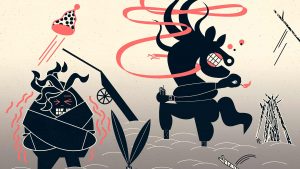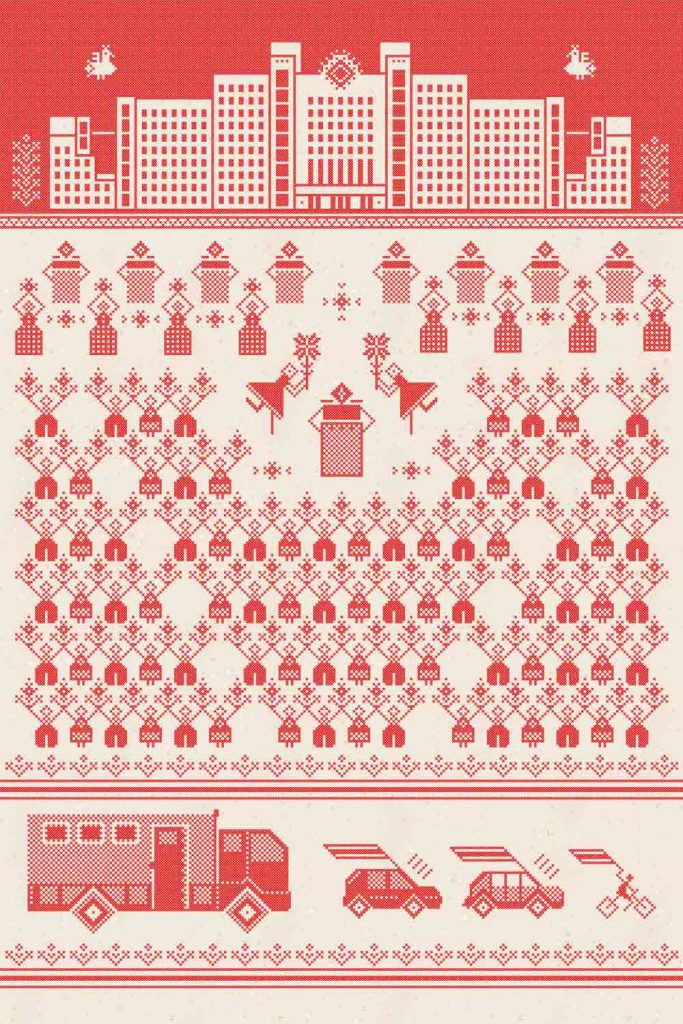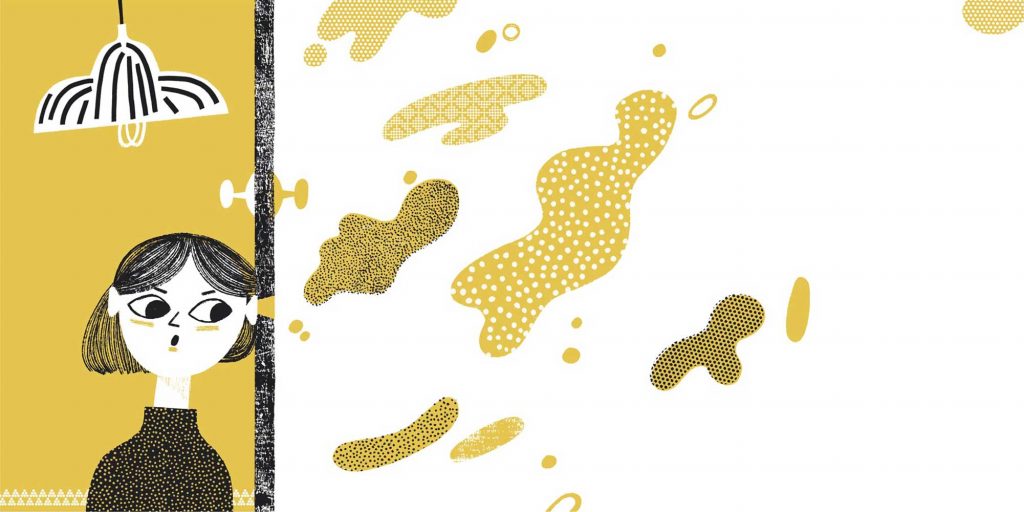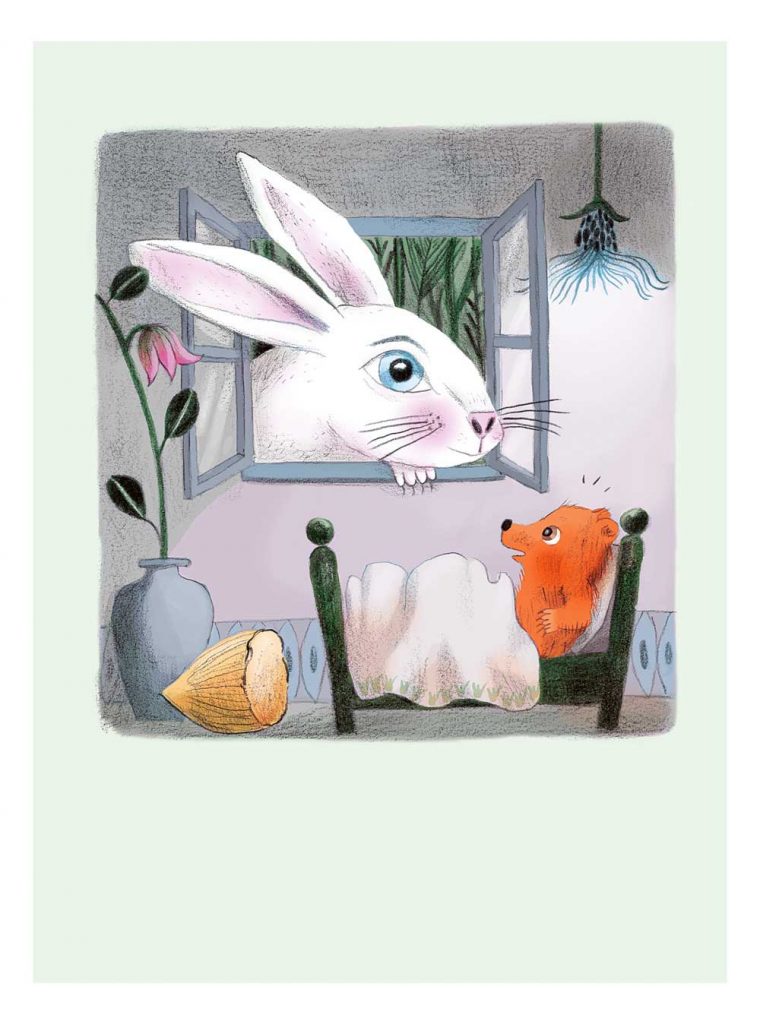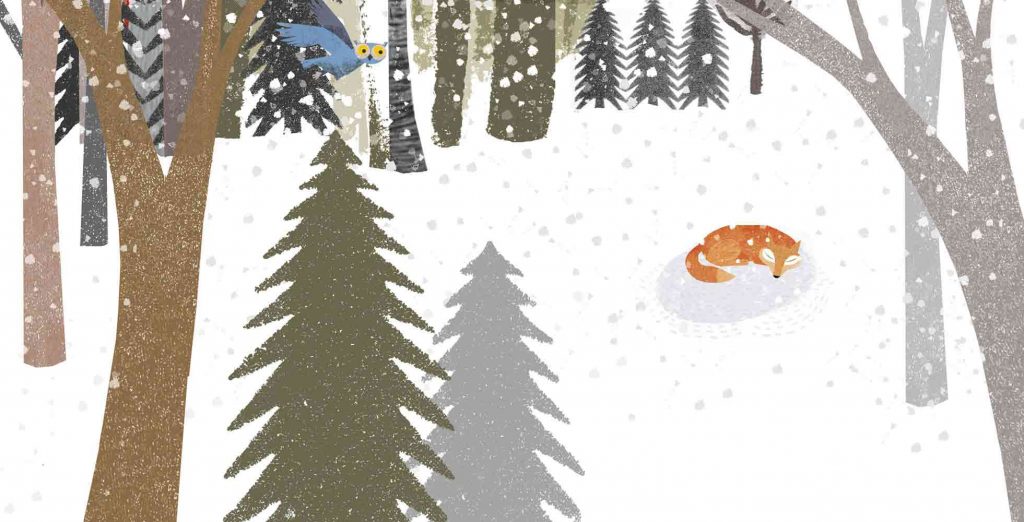The “Poetic toys” section consists of a series of books selected for their approach to poetry and the use of images in education. By reading ‘ekphrasis’, ‘nonsense’, ‘linguistic synaesthesia’ or narrative, we identify illustration as words of possibility.
The different types of poems, lullabies, nursery rhymes, riddles, tongue twisters, nonsense, limericks, haiku, extend their richness to literary poetry. The intention of the collected works is to approximate the poetic through certain functional characteristics of the image. Thus, the image, being a product of the imagination, has the possibility of extending its poetic mechanisms.
Generally, the illustration both accompanies and mirrors the text, relegating the ‘active’ purpose of the poetic function to literature alone. In the books chosen, images dialogue with the function of broadening perception, restoring a changeable, polyvalent status to reading. Hence the image becomes an active part, opening up a plurality of meanings. Sometimes the word becomes image and the image becomes word.
In the composition of an illustration as a game, one does not merely try to show an image that explains what it is, instead what it could be. The image with its allegory deploys a unifying force that opens up interpretation, triggering resonant connections in the young reader. Thus, the idea that the image is evocative of words that unify the senses.
Ever since birth, our being occupies an immense surface and our wide boundaries are changeable, and thinking about this, it would be natural to say that the image, the product of our thinking, shares our very nature of immensity.
Poetic toys are a different form of pedagogy. Play, being a fundamental aspect in the development of the mental structure, evolves into a free modelling of subjective synthesis, allowing connections to be made even with dissimilar planes of reality, permitting an ambivalent, plural and sometimes conflicting form of understanding the world.
Poetic play allows a more complex approach to reality: it erases boundaries, establishes opposing relationships, renews meanings and depicts. Poetic play is an auroral lens.
As such, creative processes emerge in picture books as synthesising, substitutive and complex activities; they are dynamics with which the first reader perceives, exercises the faculty of reasoning and, above all, of creating.
Dreaming, remembering, imagining and fantasising are all intellectual forms of indeterminacy that lead to poetic experiences of transmutation: it is not about accumulating knowledge, but about exercising inventive capacity in the experience of life.
Gabriel Pacheco
Illustration by Marta Ignerska, Stories painted wih sounds (Zamieniam się w słuch: czyli opowieści dźwiękiem malowane), 2020



